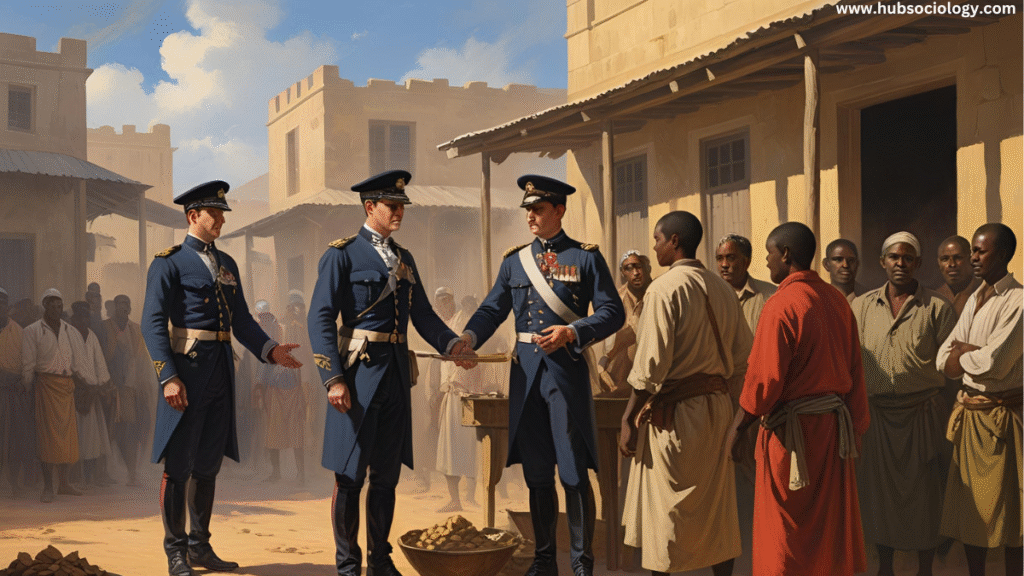Introduction on Concept of Habitus and Capital
Pierre Bourdieu, one of the most influential sociologists of the 20th century, developed key concepts that have profoundly shaped contemporary sociological thought. Among his most significant contributions are the concepts of habitus and capital, which he used to analyze social structures, power dynamics, and cultural reproduction. Bourdieu’s theories provide a framework for understanding how individuals navigate social spaces, how inequalities are perpetuated, and how social practices are internalized and reproduced over time. This essay examines Bourdieu’s ideas of capital and habitus, how they interact, and how they relate to sociological research.
1. Understanding Habitus: The Internalized Social Structure

Definition and Origins
A key idea in Bourdieu’s sociology is “habitus,” which refers to the deeply rooted routines, abilities, and personalities that people develop as a result of their experiences in life. It is the “structuring structure” that shapes how people perceive, think, and act in the social world (Bourdieu, 1977). Habitus is not innate but is developed through socialization, particularly in family, education, and other social institutions.
Key Features of Habitus
- Embodied Socialization: Habitus is embodied—it exists in people’s gestures, tastes, and ways of speaking. For example, the way a person from an upper-class background carries themselves differs from someone from a working-class background.
- Durable but Not Fixed: Once formed, habitus tends to persist but can adapt to new social environments. However, early socialization has a lasting impact.
- Generative and Adaptive: Habitus generates practices and perceptions that align with an individual’s social position. It helps people navigate social fields without conscious calculation.
Example of Habitus in Practice
Consider educational attainment. Children from middle-class families often develop a habitus that aligns with academic success—they are socialized to value education, engage in intellectual discussions, and feel comfortable in institutional settings. In contrast, working-class children may develop a habitus that does not align with academic expectations, leading to lower educational achievement despite equal potential.
2. Forms of Capital: Beyond Economic Wealth
Bourdieu expanded the Marxist notion of capital to include non-economic forms that influence social mobility and power. He identified four main types of capital:
1. Economic Capital
This refers to material wealth—money, property, and assets. It is the most tangible form and can be directly converted into other resources.
2. Cultural Capital
Cultural capital consists of knowledge, skills, education, and cultural preferences that confer social advantage. Bourdieu identified three subtypes:
- Embodied: Personal cultural dispositions (e.g., accent, manners).
- Objectified: Possession of cultural items, such as artwork or books, is objectified.
- Institutionalized: Formal qualifications (e.g., degrees).
Example: A person with a degree from an elite university (institutionalized cultural capital) may have better career opportunities than someone without one, even if their economic capital is similar.
3. Social Capital
This refers to networks, connections, and group memberships that provide access to resources. “Who you know” is more important to social capital than “what you know.”
Example: A businessperson with connections to influential figures can secure investments more easily than an equally skilled entrepreneur without such networks.

4. Symbolic Capital
Symbolic capital is the prestige, honor, and recognition that legitimizes power. It is the form of capital that makes other forms of capital socially acceptable.
Example: A politician’s authority (symbolic capital) allows them to influence public opinion, even if their economic or cultural capital is not extraordinary.
3. The Interplay Between Habitus and Capital
Bourdieu’s concepts of habitus and capital are deeply interconnected. Habitus shapes how individuals accumulate and utilize different forms of capital, while capital influences the development of habitus.
How Habitus Affects Capital Accumulation
- Individuals with a habitus aligned with dominant cultural norms (e.g., speaking “proper” language, appreciating high culture) find it easier to accumulate cultural and symbolic capital.
- Those whose habitus does not match institutional expectations may struggle to convert their skills into recognized capital.
How Capital Shapes Habitus
- Access to economic capital allows families to invest in education (cultural capital), shaping their children’s habitus toward academic success.
- Social capital (e.g., elite networks) exposes individuals to environments where certain behaviors and tastes are reinforced.
Example: Education and Social Reproduction
Bourdieu argued that the education system reproduces social inequalities by favoring the habitus and cultural capital of dominant classes. Middle-class students, already equipped with the “right” cultural capital, perform better in school, while working-class students may feel alienated. Thus, schools legitimize and perpetuate class hierarchies rather than providing equal opportunities.
4. Applications of Bourdieu’s Concepts in Sociology
1. Social Stratification and Inequality
Bourdieu’s framework helps explain why social mobility is limited. Those with the “right” habitus and capital maintain their advantage, while others face systemic barriers.
2. Cultural Consumption and Taste
In Distinction (1984), Bourdieu showed how taste in art, music, and food reflects class distinctions. The dominant class uses cultural capital to assert superiority, while the working class develops its own (often devalued) cultural practices.
3. Power and Symbolic Violence
When dominant groups impose their culture as superior, making inequality seem normal, symbolic violence takes place. For example, schools may dismiss working-class dialects as “incorrect,” reinforcing linguistic hierarchies.
4. Field Theory
Bourdieu introduced the concept of “fields” (e.g., education, politics, art) as arenas where individuals compete for capital. Each field has its own rules, and success depends on possessing the relevant habitus and capital.
5. Criticisms of Bourdieu’s Concept of Habitus and Capital
While Bourdieu’s theories are influential, they have faced critiques:
- Deterministic Tendencies: According to some, habitus ignores personal agency in favor of overemphasizing institutional limitations.
- Difficulty in Measurement: Cultural and symbolic capital are abstract, making empirical study challenging.
- Overemphasis on Class: Bourdieu’s focus on class may overlook other axes of inequality, such as race and gender (though later scholars have applied his concepts to these areas).
6. Conclusion on Concept of Habitus and Capital
Bourdieu’s concept of habitus and capital provide powerful tools for analyzing social structures, cultural reproduction, and power dynamics. They reveal how inequalities are not merely economic but deeply embedded in everyday practices, tastes, and institutional norms. By understanding habitus and capital, sociologists can better explain why social hierarchies persist and how they might be challenged.

While his theories have limitations, their applicability across various domains—education, culture, politics—demonstrates their enduring relevance. Bourdieu’s work continues to inspire research on inequality, identity, and social change, making him a cornerstone of contemporary sociological thought.
Topic Related Questions on Concept of Habitus and Capital
5-Mark Questions on Concept of Habitus and Capital (Short Answer)
- Define Bourdieu’s concept of habitus and provide an example.
- What are the three forms of cultural capital identified by Bourdieu?
- How does social capital differ from economic capital?
- Explain symbolic capital with an example.
- How does habitus influence an individual’s educational success?
- What is the role of habitus in shaping cultural tastes?
- How does Bourdieu’s concept of capital expand on Marx’s idea of capital?
- Give an example of how economic capital can be converted into cultural capital.
- What is meant by “symbolic violence” in Bourdieu’s theory?
- How does habitus contribute to social reproduction?
10-Mark Questions on Concept of Habitus and Capital (Brief Essay/Detailed Explanation)
- Discuss Bourdieu’s concept of habitus and its role in shaping social behavior.
- Explain the different forms of capital in Bourdieu’s theory and how they reinforce social inequality.
- How does cultural capital contribute to educational inequality? Provide examples.
- Analyze the relationship between habitus and social class in Bourdieu’s framework.
- What is symbolic violence? How does it operate in educational institutions?
- Compare Bourdieu’s concept of capital with Marx’s theory of capital.
- How does habitus help in understanding lifestyle and consumption patterns?
- Discuss how social capital influences career success with real-world examples.
- Explain Bourdieu’s idea of “fields” and how capital operates within them.
- Critically evaluate the limitations of Bourdieu’s concept of habitus.
15-Mark Questions on Concept of Habitus and Capital (Long Essay/Critical Analysis)
- Critically examine Bourdieu’s theory of habitus and capital as tools for understanding social stratification.
- How does Bourdieu’s concept of cultural capital explain the reproduction of class inequalities in education?
- Discuss the applicability of Bourdieu’s theory in analyzing contemporary digital social spaces (e.g., social media).
- “Habitus is both a product of history and a producer of practices.” Elaborate on this statement with sociological examples.
- Evaluate the role of symbolic capital in maintaining power structures in politics.
- How does Bourdieu’s theory help in understanding the persistence of gender and racial inequalities?
- Compare and contrast Bourdieu’s concept of habitus with Giddens’ structuration theory.
- “Schools are not neutral but reinforce dominant cultural capital.” Discuss with reference to Bourdieu’s ideas.
- Analyze how Bourdieu’s theory can be used to study cultural consumption (e.g., art, music, fashion).
- Assess the strengths and weaknesses of Bourdieu’s framework in explaining social mobility.
